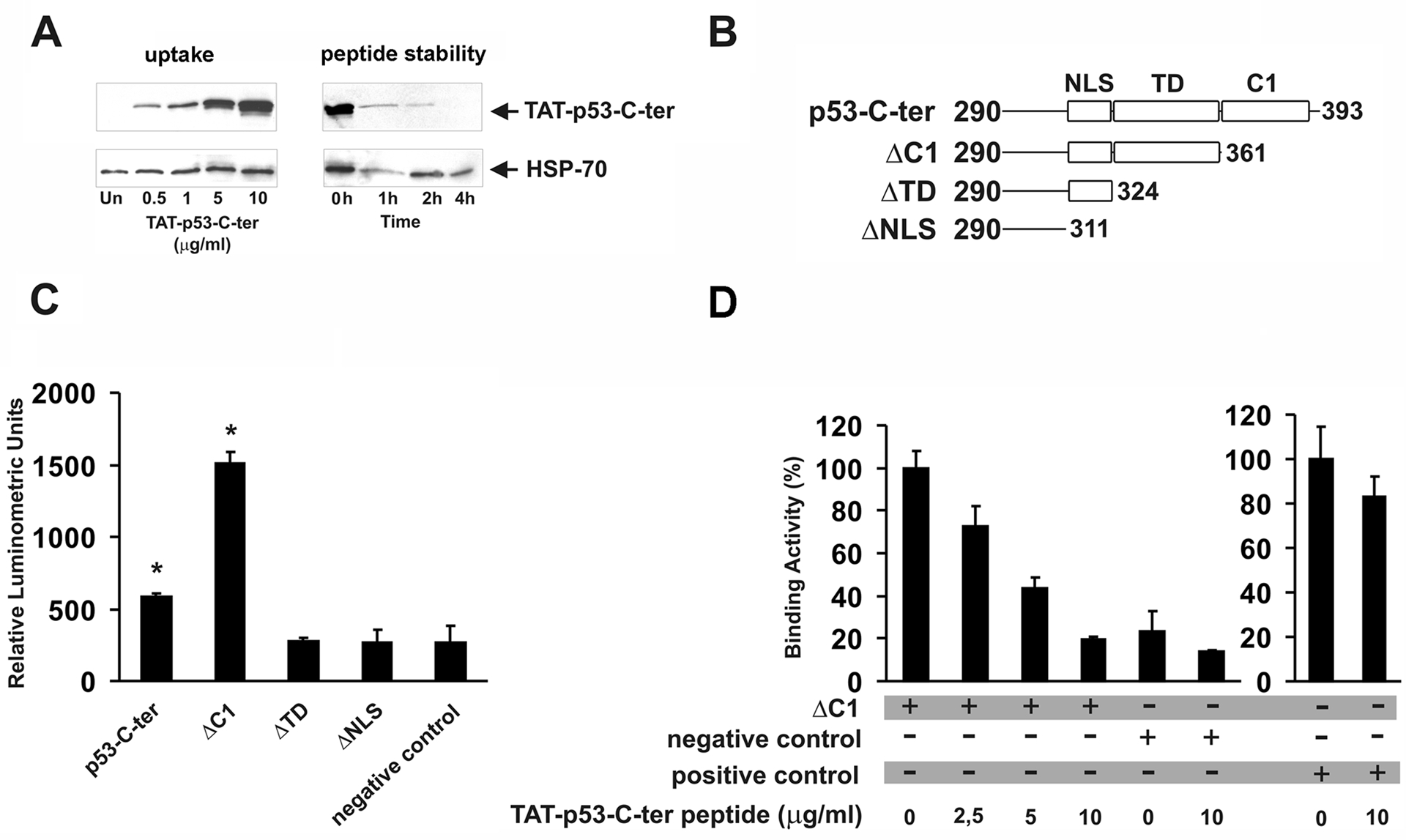Fig. 2.

A: dose-dependent uptake of the TAT-p53-C-ter peptide. Cells were treated for 1 hour with the indicated peptide amounts; intracellular TAT-p53-C-ter peptide stability in cells treated with medium containing 10 μg/ml peptide for 1 hour (0h) and in cells cultured for the indicated times in peptide-free medium. In A, peptides were detected with an anti-HA antibody. HSP-70 content was used for normalization. Blots are representative of two different experiments with similar results. B: representation of p53 peptides cloned in the pFN11A vector. NLS= Nuclear Localization Signal; TD= Tetramerization Domain; C1= C1 peptide. Numbers refer to the aminoacids of human p53 protein cloned in each plasmid. C: PARC/p53 binding assay. Phoenix cells were transfected with the reporter vector pGL4.31, pFN10A-CPH-PARC and the pFN11A plasmids containing the p53 peptides described in B. Thirty-six hours after transfection, luciferase activity was determined. Negative control was carried out by transfecting Phoenix cells with pGL4.31 and pACT and pBIND non-interacting vectors. D: Phoenix cells were transfected with pGL4.31, pFN10A-CPH-PARC and pFN11A-ΔC1 plasmids and treated for 6 hours with the indicated amounts of TAT-p53-C-ter peptide (administration every 2 hours) before luminometric detection. Binding activity of untreated cells was taken as 100. Negative control experiments were designed by transfecting Phoenix cells with pGL4.31 and pACT and pBIND non-interacting vectors. As positive control (right histogram), Phoenix cells were transfected with pGL4.31 and pACT-MyoD and pBIND-Id interacting vectors. Binding activity of positive control left untreated was taken as 100. Samples in C and D were run in triplicate. Values ± SD are reported. Asterisks indicate statistically significant differences (p<0.05) compared to negative control. Experiments were repeated twice with similar results.
